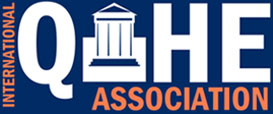In the fast-paced world of online education, ensuring quality assurance is crucial for institutions worldwide. Recognizing the global nature of educational institutions and the need for flexible evaluation methods, quality assurance organizations like QAHE have adapted their approaches to provide 100% online and offsite quality assurance services. This article explores how QAHE ensures the same level of scrutiny and attention to detail in the online review process, specifically focusing on adapting online site visits and virtual interviews.
Online Site Visit: Utilizing Photo Documentation
In situations where physical site visits are not feasible, institutions can provide comprehensive photo documentation of their infrastructure, facilities, and resources. QAHE's evaluators carefully review these photos to assess the physical aspects remotely. By leveraging photo documentation, evaluators can analyze the institution's environment, ensuring compliance with training accreditation standards. This approach eliminates geographical barriers and allows institutions to undergo evaluation efficiently, without the need for on-site visits.
Virtual Interviews Replaced by Email Questionnaires
Traditional virtual interviews may not always be feasible for institutions worldwide. To overcome this challenge, QAHE has incorporated email questionnaires as an alternative method for gathering information from key stakeholders. Institutions distribute these questionnaires to faculty members, administrators, and students, who can provide feedback, perspectives, and relevant data via email. The asynchronous nature of email questionnaires offers flexibility for respondents to answer at their convenience while ensuring their input is captured effectively.
Maintaining Rigor and Consistency
QAHE maintains rigorous evaluation standards and guidelines throughout the online review process. Qualified evaluators, possessing expertise in the specific field, ensure a consistent and detailed assessment. Clear guidelines and criteria are provided to institutions, outlining the expectations and requirements for programmatic accreditation. QAHE also employs robust quality assurance and review processes, including periodic evaluations of conducted assessments and calibration sessions among evaluators. These measures guarantee the same level of scrutiny and attention to detail, regardless of the online format.
Conclusion:
QAHE's adaptation of evaluation methods for online education ensures that institutions worldwide can undergo quality assurance processes with the same level of scrutiny and attention to detail. Through photo documentation in lieu of physical site visits and email questionnaires as a replacement for virtual interviews, institutions can engage in comprehensive evaluations remotely. By upholding rigorous evaluation standards and employing robust quality assurance mechanisms, QAHE ensures the integrity and credibility of the quality assurance process. This approach provides institutions with flexible, accessible, and reliable quality assurance services in the evolving landscape of online education.





Comments